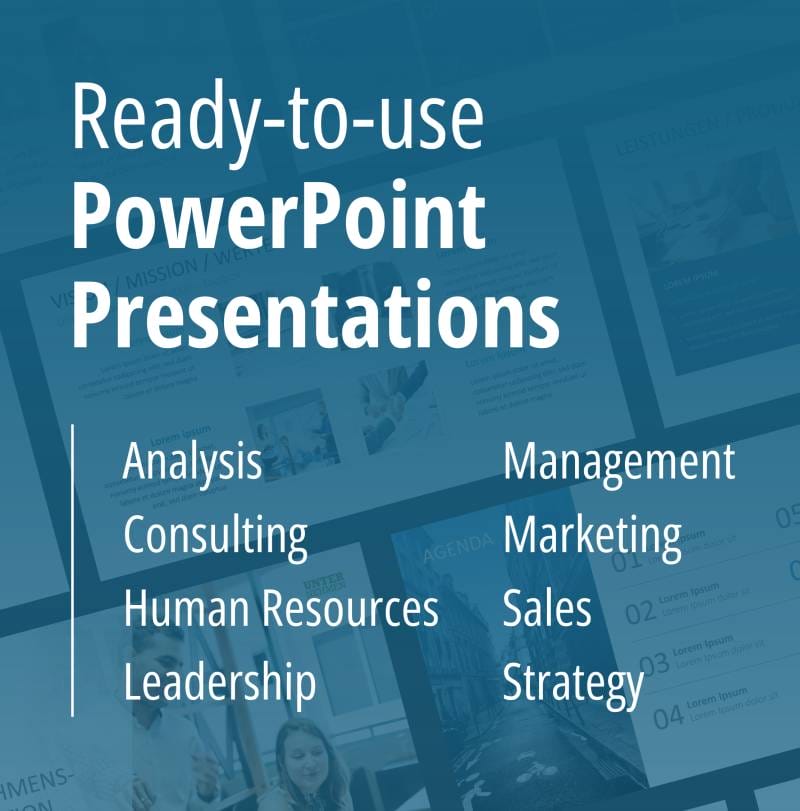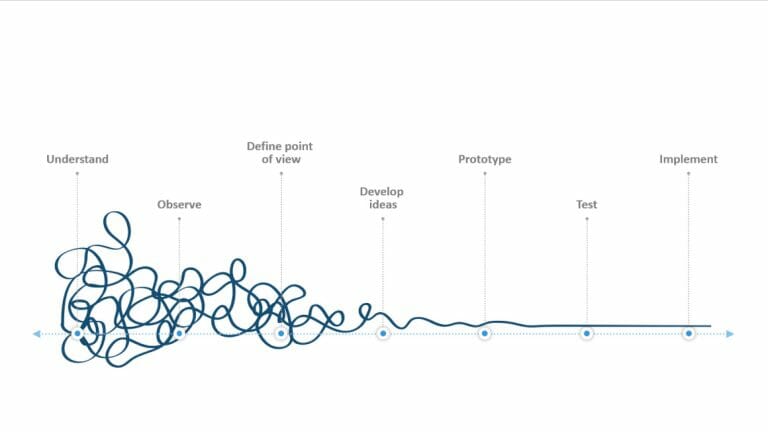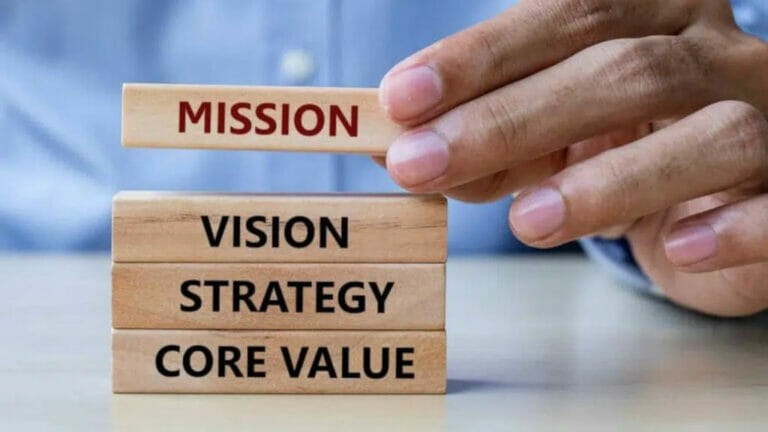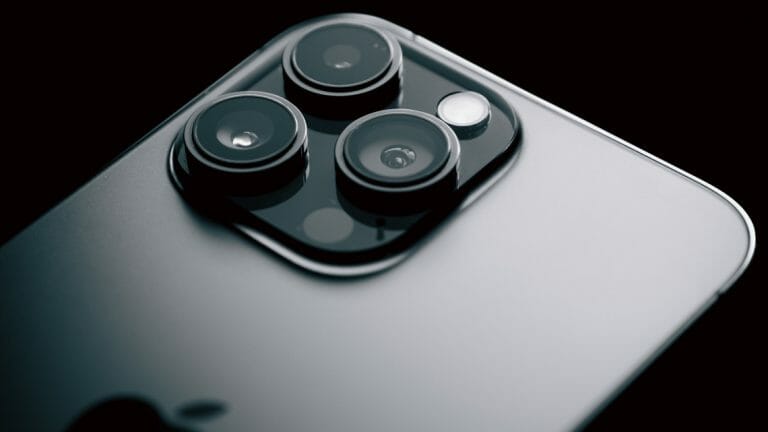
16 Ways to Kick-Start Your Presentation!
Hermann Hesse said, “There is magic in every beginning.” Hesse was referring to the stages of life. Had he been talking about presentations his statement might not have been so positive. As most of us know, the beginnings of presentations are usually anything but magical.
They often start with a clichéd, uninspired greeting mumbled quickly by the presenter – not the most exciting or compelling way to get things rolling! Here are 16 simple tips on how to get your presentation off to a better start.
Starting a presentation: Why you should do it differently
It’s about the content. So why all this fuss about tricks, ideas, and strategies for the perfect presentation? And especially about the presentation introduction? A brief greeting, efficiently handling the formalities, and focusing on the important facts – that’s what matters, right?
From a logical standpoint, yes. But anyone who truly believes that human behavior is primarily guided by logic approaches the matter very naively.
Even when we strive to be driven by reason in everything, other factors often take control. Our instincts, our emotions, our subconscious – they all have a say (or more) and are not necessarily concerned with the facts. If one wants to capture the attention of others, it’s important to understand this and skillfully make use of it.
Why the introduction to your presentation is so important
Even before we consciously process information, our brain filters and categorizes it. This is called selective perception. Without thinking about it, our brain decides, in a fraction of a second, whether something is known or unknown, important or unimportant, interesting or uninteresting. It’s a really useful tool!
If we were to consciously perceive all stimuli and information all the time, it would drive us crazy and make us incapable of acting. But selective perception also prevents us from focusing our attention where we might want to. As a presenter, this inattentional blindness can be your undoing. As soon as you open your mouth and look at your very first slide, your audience’s brains are deciding whether or not to focus on you.
So, what is the right way to start a presentation?
How should you start your presentation so that your audience doesn’t tune out? Your audience is far too familiar with the dry, uninspired introductory slide. Start things off this way and before you know it, they’ll file your presentation under “long-winded, boring and standard”. And no one wants that.
You want to grab attention, arouse interest, curiosity and ideally even emotions right from the start. Give people a reason to listen to you. Captivate, raise questions, make your words matter! Here are some tips on how to do just that.
1. Beware the cliché trap

Just like the standard opening slide, using clumsy, boilerplate phrases right at the beginning (not to mention during the rest of your presentation) will inevitably come across as stodgy and uninspired.
Here are some ideas on what to avoid and what to say instead:
- Impersonal greeting: Opening with, “Dear attendees” or, “Dear audience” won’t establish a connection with your audience. Address people as who they are: employees, colleagues, associates, etc.
- Meaningless empty phrases: Thanking people for coming or telling them that you have the honor of presenting today is well-intentioned but may come across as empty talk. Again, a more personal touch is better: “It’s great to see you all here today.”
- Apologies: Apologizing up front draws focus to things that otherwise might have gone unnoticed. On top of that, you won’t come across as the confident, self-assured speaker that you are. So, refrain from statements such as, “First, I must apologize for my impromptu presentation” or, “I’m afraid I’m not a very entertaining speaker.”
2. Tell your audience not what, but why you’re presenting
Most of the time, your audience will know why they’re there and what the presentation is about. Yet there are situations in which you need to introduce both yourself and your topic. So, what’s the best way to do this?
The standard introduction slide showing your name and topic is not the most exciting way to get your presentation going. Instead of stating what you’re presenting, how about telling your audience why you’re presenting? For example, substitute, “I’m here to present last year’s sales figures.” with, “I’m here to discuss how we can improve on last year’s sales figures.” Giving the purpose of the presentation is an effective alternative to stiff introductions and a great way to grab the attention of your audience.
3. Interact with your audience
Nothing energizes people more than being actively involved in something. Being addressed, being asked for our opinion, being part of something – that’s gets our attention. So why not use your presentation’s intro to engage your audience?
This could be done with a question, a short survey, a guessing game or even some kind of brainstorming activity to warm your audience up (“What comes to mind when you think about today’s topic?”). This kind of interactive kick-off should be informal and not feel like a test. It’s there to provide a smooth transition to the heart of your presentation and get your audience into your topic.
You could also start by asking about any issues or unanswered questions that your presentation can solve or answer. Make sure you’re as familiar with the subject matter as possible so you can respond to any and all questions that may arise. Find more information on this type of presentation here.
4. Make a statement
Start your presentation with an assertion, a promise, a fact or a quote. As the presentation progresses, keep coming back to this statement by proving, qualifying or refuting it.
A little shock value can go a long way, too. Try making your statement provocative or a little edgy. Because when your audience thinks, “How can they claim something like that?”, you’ll have them right where you want them. They’ll want to know how you arrived at that statement and how you’re going to back it up.
You can also use your core statement right at the beginning. Just make sure it’s formulated in a way that it arouses interest.
5. Talk about a current or historical topic
Checking out the latest headlines, the company’s latest announcements or other current affairs can pay dividends when you’re preparing your presentation. Current, hot topics that are relevant to your presentation will practically deliver your introduction on a silver platter.
It could be something like this: “You may have seen a recent study on the state of digitalization in Germany in the news yesterday. We’ve obviously got a long way to go. And that’s exactly what I’d like to talk to you about.”. You can also quote the relevant headline or article on your first slide.
A current, company-related reference can also be used in work presentations: “The new annual report came out this morning. Maybe you already had a chance to take a look at it. I’d like to talk about the latest figures.” Historical facts can also be used in the same way or to contrast with what’s going on now.
6. Use Media

Let’s face it, people want to be entertained. Words alone can be enough, but adding some media makes things easier. Everyone finds pictures, videos and music entertaining. They can jump start any presentation by providing the audience with different ways to get into the topic.
You can use something provocative, funny, moving or unsettling. The main thing is that it creates interest and relates to your content.
7. Share a personal anecdote
Presenting oneself not only as a factual speaker but also as a person during presentations is fundamentally advantageous. It creates a sense of familiarity, can evoke emotions, and naturally generates sympathies.
Especially effective can be starting your presentation with personal words rather than facts. Just share a personal experience you’ve had with the topic or tell a relevant anecdote.
If your storytelling is skillfully chosen, it can even earn you more points as a presenter. This approach not only makes a dry topic more relatable and vibrant but also allows you to position yourself as an expert, explain your motivation, or provide examples of the relevance of your topic, all at the same time.
Sharing an anecdote about yourself is a great way to build rapport with your audience. It also sets the stage for you as a presenter. If your anecdote is funny and engaging, the audience will see you as funny and engaging. Here’s a great example of how this effective icebreaker works.
8. Use humor
This won’t work for all topics and it has to suit you as a speaker. A joke, no matter how good, will seem artificial and put on if you don’t feel comfortable telling it. But when done right, a funny introduction can be a great icebreaker.
It’s about creating a relaxed atmosphere. Humor gives signals to the audience that this presentation won’t be dry or dull and it’s worthwhile to stick around.
For more in-depth information on effectively incorporating humor, you can explore our article on “Humor in Presentations.”
9. Add the element of surprise
Surprising facts or actions can also be used to grab your audience’s attention right from at the start. Choose an eye-opening statistic or a little-known fact about your presentation topic. It doesn’t have to be deadly serious; it can be a bit playful, too. For example, did you know that the brain blocks out superfluous things, such as the second “that” in a sentence?
Even doing something unexpected, such as using specific gestures and props, can start your presentation (like here) in a surprising way. What you do can be shocking, funny or thought-provoking – the main thing is that it creates an unconventional intro. Whether it’s through acting, singing or even eating on stage, let your imagination and creativity be your guide.
10. Frame your presentation
It’s never a bad idea to start your presentation with the end in mind. Connecting the beginning to the conclusion – bookending your presentation – can be particularly effective. Here are some ideas on how to do this:
- Make a statement at the beginning and revisit it at the end. What impact does the statement have now?
- Have your audience vote on the same question at the beginning and at the end. Discuss whether your presentation influenced their second vote and why.
- Start and end with the same words, such as a quote or idiom. The presentation should underline its meaning.
More information about the importance of the end of the presentation and how you can make it effective can be found in our post “Presentation Ending.”
11. Leverage imagination

For frequent presenters or speakers with a certain level of recognition, considering a specific approach as a trademark for every speech can be worthwhile. Often, this is chosen to be a signature at the end of a presentation, like a particular personalized closing statement. However, the introduction can also be personalized.
This technique was frequently employed by Vera F. Birkenbihl. The author, motivational and management trainer, was known for her legendary way of delivering speeches – even before interesting presentations became highly sought after.
She typically started with a small “quiz,” which was then revisited throughout the presentation. Here’s a nice and entertaining example of it, where you can also discover some of the other tips mentioned here.
12. Let a demo do the talking
Instead of starting with a greeting, capture your audience’s attention with a demonstration. Let’s imagine you’re working on a new language assistant and now you’re introducing it. Why not give the attendees a little taste of what the language assistant can do?
Use the product you’re presenting actively to bridge the gap between theory and practice. Such an introduction immediately provides the audience with a clear picture of the presentation topic. Even if not all products can be demonstrated this way, consider how you can showcase the content of the presentation.
13. Start with the end
We all know that the conclusion belongs at the end of a presentation. However, have you ever considered starting your presentation with the result? This way, you can thoroughly explain how you arrived at that conclusion and capture the audience’s attention. It can lead to an intriguing scenario.
Nonetheless, be aware that some of your listeners might lose interest in the buildup after this introduction. After all, the journey is often just as important as the destination.
14. Combine ideas
Of course, you’re not limited to just one approach when it comes to the introduction of your presentation. You can combine the mentioned introduction ideas in a fitting way. Show an image and explain its personal significance in your own words. Incorporate a current reference and combine it with a historical one.
Or supplement a personal experience with facts from a recent study. This is where you can let your creativity flow. However, the beginning of your presentation shouldn’t be overly complex or overloaded, as your main content is yet to come.
15. Presentation is everything
This boils down to you. It’s not just what you say that matters, it’s how you say it. The most compelling and engaging intro will fall flat if it’s mumbled or read dryly from a script. It’s how you walk on to the stage or into the room. Remember, an audience forms an opinion the minute they see, not hear, a presenter.
Pay attention to your posture and gestures. Are you standing up straight? Are you using your hands too much? Too little? Are you making eye contact with your audience?
You may be thinking, “How can I focus on all this while I’m presenting?!”. Find our about helpfil tips in our post “Body Language in PowerPoint“.
The short answer is, you can’t. That’s why practice is your best weapon. Memorize your intro. Rehearse it in front of a mirror or better yet, ask family or friends to be your audience. You can even film your run-through on your phone to see exactly what you do well and what could be better. The more prepared you are, the less nervous you’ll be. And this is key for getting your presentation off on the right foot.
One more tip: If time and circumstances permit, make some informal small talk while your audience is gathering. This will also ease any butterflies you may have.
16. Bonus idea: Starting presentations like a TED-talk
TED-Talks (short for Technology, Entertainment, Design) take place in California every year. The content of the conference is presentations of innovations, and the best presentations get published as videos afterwards. Every presenter has got an 18-minute time slot to present their ideas, similar to a pitch presentation. This means that a strong introduction is even more important for the speaker given the short presentation time.
How do the introductions work in presentations?
Draw attention to your topics right from the start. “Set your hook” and catch your audience metaphorically. The following statistics show that a good introduction is crucial to how your presentation is perceived and how attentively you are listened to:
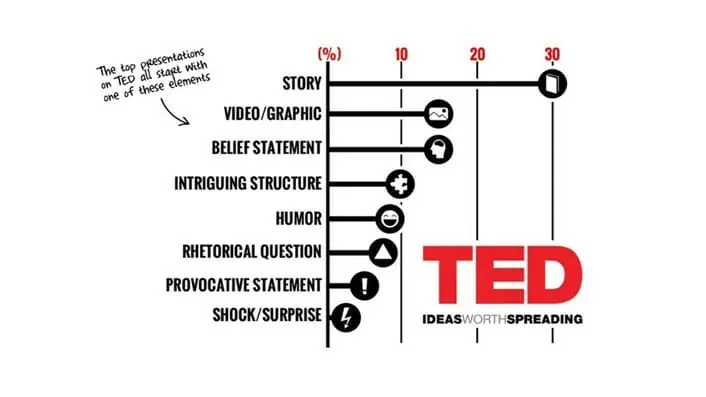
30% of top TED-talk speakers use Storytelling to start their presentations. Likewise, a vivid graphic or a convincing video can also increase attention at the beginning and ensure that the first impression is a good one.
Images and stories thus exert a fascinating power on us.
This is the case because quite simply, stories and images have centuries of traditions among us humans. They are the oldest means by which people have communicated and passed on knowledge and experience and continue to do so today. They are therefore the most effective levels of communication.
Studies prove that stories are remembered 22 times better than just facts. The combination of image and text is also 65% remembered after three days, while pure text loses with just under 10% of it being remembered.So, what are you waiting for? Rely on storytelling and present like a professional TED talk speaker!
For more information on how to incorporate stories correctly, see our storytelling article.
Conclusion: Set the tone for the rest of your presentation
As you can see, there are numerous creative possibilities to start your presentation, away from the formal standard. These approaches are not only better for your success and your audience, but they will also bring you more joy. When you try out such methods, you’ll quickly realize that giving presentations can be not only work but also enjoyable.
There’s a significant difference between reciting the usual introductory formalities to an already bored audience and sharing an exciting anecdote while looking into curious faces. So, all that remains is to wish you lots of fun and success in adding the “magic” to your personal beginning!
If you have any questions about presentation introductions or PowerPoint presentations in general, feel free to contact us at [email protected]. We’re here to help!
For professionally designed slide templates to enhance the impact of your presentation, take a look at our shop. Feel free to browse around. We have numerous slides covering various (business) topics. ►Visit the Shop
You might also find these posts interesting:

